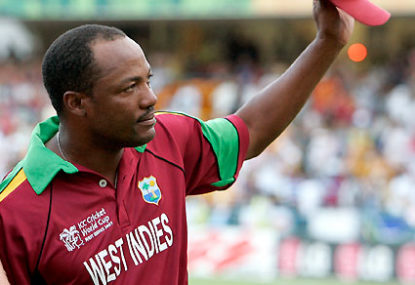WATCH: Freddy Flintoff's son dominates County 2nds game batting exactly like his dad
Check out some of the short-arm pull shots from Rocky Flintoff!

As we have known for years, cricket has been the glue that has held the West Indies together.
Cricket gave the ten nations a sense of identity.
Right from the three Ws in the 1950s through to Richie Richardson’s world conquerors in the mid 90s, each player that donned the maroon cap was proud to be a West Indian cricketer.
But times have changed. Speak to many experts in the Caribbean and they will tell you the truth of the matter is the current generation are more determined to promote their local nation.
After the 2012 T20 World Cup triumph, it is known top players wanted to ensure their respective nations were to be promoted through international newspaper interviews. For the players of the current generation, the world is familiar with the term ‘West Indies’.
That identity has already been created by the great West Indian teams since 1960s all the way to the mid 90s. The current crop want their own distinctiveness. This has led to conflict in all levels of cricket in the West Indies.
In the 1960s each of the current ten nations that form the West Indies were still ruled by the colonial powers. It was only in 1980s that each nation had gained independence.
Through those 25 years, the only people that were idolised by the people of the Caribbean were cricketers. As Clive Lloyd had once said “every kid on the street wanted to play cricket for the West Indies”
But as each island nation gained independence and formed its own economy the glue had already started to dry. Islands with a large dependency on tourism such as Jamaica, Barbados and Antigua had always been strong in terms of player representations were now been challenged by the economically strong oil and gas nations such as Trinidad and Guyana.
Since the independence of each of the nations, the divide in the ethnic groups was also starting to surface.
Jamaica, Barbados and Antiguan players had largely come from African backgrounds. They were physically strong and their appearance distinctly different from the Indian-background players from Trinidad and Guyana.
Coincidently it was also the rise of Brian Lara as the West Indian hero that led to Trinidad slowly dictating powers on and off the field in West Indies cricket.
It is well known Lara favoured his fellow Trinidad team mates over others and boosted players that supported him. Suddenly the likes of Ramnaresh Sarwan, Darren Ganga, Dwayne Bravo and Denesh Ramdin were elevated.
During this same era the exposure to American television and sport in the Caribbean led to the more physical tough youth from Barbados, Jamaica and others escaping to America and trying their luck in more commercialised sport.
Slowly the tide had turned. The rise of cricketers from Trinidad and Guyana predominately from the sub-continental background were now dominating the West Indies national team rather than their big brothers in Jamaica, Antigua and Barbados.
Most of these players were either spin bowlers or crafty batsmen. This also promoted the need for slow pitches to suit their style of play.
All of a sudden this shift had caused insecurity among nations such as Jamaica. Players such as Marlon Samuels and Chris Gayle had teammates dominated by players with different ethnic origins.
There was a need for leader like Clive Lloyd to emerge but instead came the T20 format. It would tear apart the last bit of glue that held the West Indies cricket together.
In the recent past Phil Simmons – a Trinidadian – had tried to lure some of Trinidad players such as Dwayne Bravo and Kieron Pollard back into ODI or even Test cricket, but he has lacked support from the selectors. For Simmons it is not a surprise, as none of the selectors are from Trinidad.
One might say each country has its own politics and favourable team selections. But every other country in cricket is plays as one nation and not 10 different ones.
Before the West Indies dramatic rise from the 1960s to the 1980s, perhaps only Bob Marley was a non-cricketing idol for locals to look up to. Now there are sprinters, Usian Bolt and Yohan Blake from Jamaica. Singers such as Rihanna and Sean Paul. Footballers like Raheem Stirling and Dwight Yorke.
People in Jamaica now have different idols and these personalities are making a name for them under ‘Jamaica’ – and not the West Indies.
While cricketers continue to emerge from all the different islands, the evolution and the money in the T20 game means they will play more franchise cricket rather than for the national team. Each island continues to shape its own future and reality is the West Indies are now on verge of losing their identity forever.